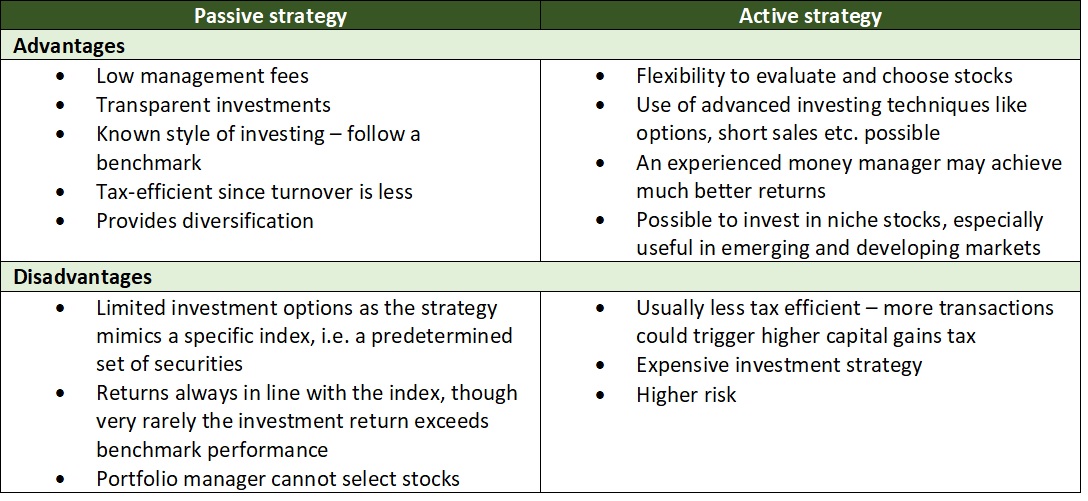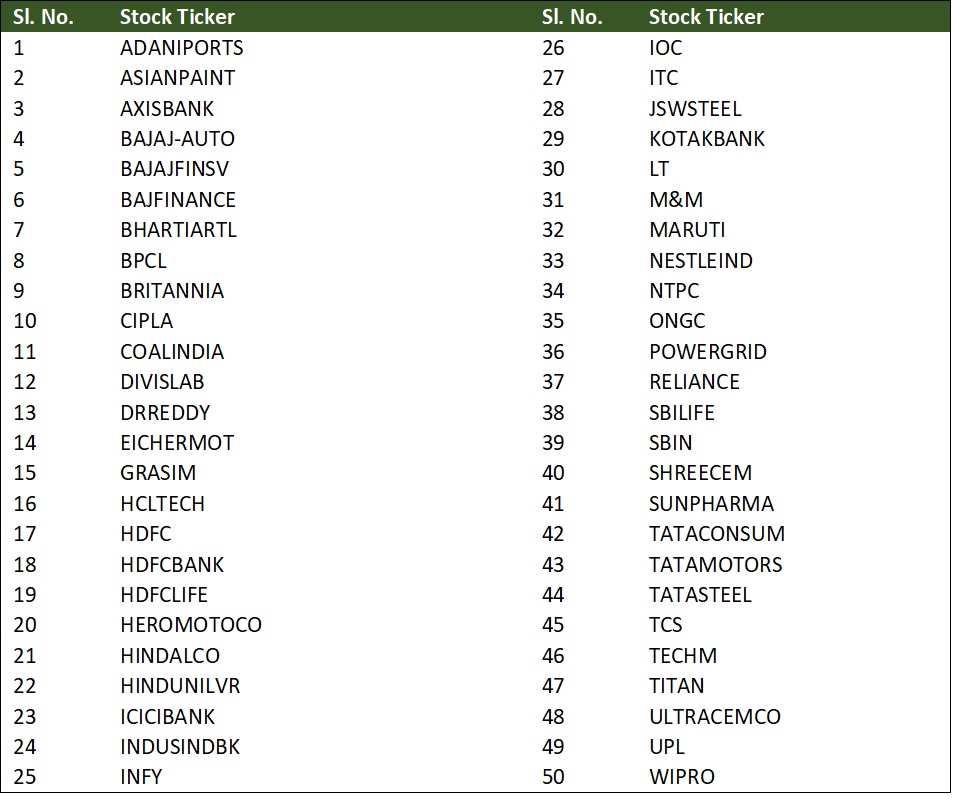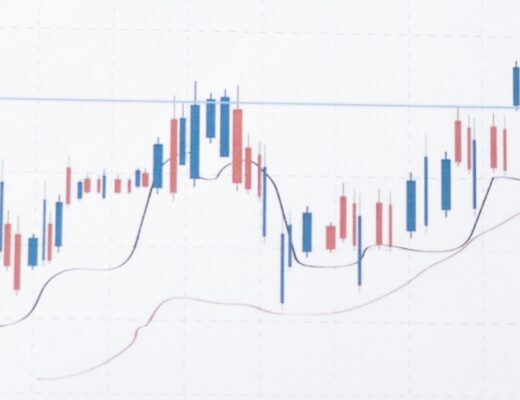The debate on which investment style is better has existed for a long time. The money management and investment fraternity spend considerable time studying cost vs the benefit of the two approaches. Choice of style affects the overall portfolio returns, and therefore, it is beyond just an academic discussion. Let us understand the concept before we can decide which approach is better. And, also deal with the questions like, is passive investing better than active? Should one invest in an index fund?
What is active investing
Active investing strategy means investing in funds where the fund managers choose the investments. Fund managers identify opportunities based on their potential return. The attempt here is to find the most attractive prospect. And, it’s a pretty hands-on approach.
In this style, the fund managers do a great deal of research on assets, sectors, companies, macro and microeconomic factors before making an investment decision. Active investing also means a quick turnaround of shares, leading to higher transaction costs and tax impact. Therefore, the expense ratio of actively managed funds ranges between 0.5% to 1.5% of the fund value annually.
In general, an active investment strategy aims to either beat the broader market or outperform a specific benchmark. Through in-depth analysis, managers find unappreciated securities. However, to consistently find undervalued stocks is an illusion and almost impossible. Over time, the market will value every security at its fair value. The point here is to spot an undervalued asset before the market does and reap the benefit.
Fund managers usually remain well-connected with the companies where they invest money. They are also well informed by connecting with peer money managers and other financial market participants.
What is passive investing
In a passive investing strategy, the objective is to match the performance of an identified benchmark. The aim is not to undergo an evaluation of any specific investment. Passive investment managers own the stocks forming part of the index and in the same proportion as in the index.
Unlike active style, the fund managers do not spend a lot of time and costs to analyze and research stocks. These funds charge lower management fees due to the lower cost of operations. Usually, the outcome of this investing technique is the best when you are in for a long haul.
Firstly, the composition of these funds (aka Index funds) does not change unless there is a change in the benchmark index. Fewer changes lead to low share turnover and, therefore, lower transaction expenses.
Secondly, the fund managers have to mimic the index. There is minimal research cost involved, and hence the strategy is less expensive.
And, finally, as the number of transactions is limited, the fund generates lower taxable income, ultimately leading to a lower cost of operations.
Also, read about ‘How to choose mutual funds‘ here.
Which style is better – active or passive?
Both the investment strategies are well accepted and acknowledged. Each of them has a different objective and has its advantages and disadvantages.
The active investment style aims to achieve risk-adjusted returns that are higher than the investment benchmark. These higher returns compensate for the risk taken by deviating from the passive style where the funds mimic a particular index.
Which style is better – active or passive – the answer is dependent on the profile of an investor and expectations from the portfolio.
Market condition linked investing strategy
When the market conditions are volatile, active management strategies tend to overperform. During such times, the broader market index remains volatile and range-bound. Therefore, the index returns remain muted.
Key advantages & disadvantages of the two strategies


All about the index funds
Index funds are mutual funds constructed with a specific market index as their base. The performance of an index fund is dependent on the particular index it follows. The fund contains shares in a similar proportion as they exist in the index. Fund managers have to manage these mutual funds passively.
The target of index funds is not to outperform the market, instead mimic the benchmark index’s performance. There can be minor performance differences due to tracking error. It is the measure of the deviation of fund from the benchmark it is tracking. Generally speaking, the lower the tracking error (usually lower than 1%), the closer the fund performance vs the index and the better it is.
Index funds provide a great deal of diversification
An index is a collection of different stocks and can offer ample diversification to any investor. Mimicking an index provides diversification and prevents investor from putting all eggs in one basket.
For instance, below is the list of stocks forming part of NIFTY50. Imagine how diverse the investment portfolio would be if a mutual fund mimics this index and holds the below set of shares.


Should you invest in index funds?
Who should invest in index funds? Investor should take investment decisions considering their risk preferences and investment objectives. Index funds are ideal for relatively risk-averse investors. However, that does not mean index funds are risk-free. These funds carry volatility risk as returns are linked to index performance.
Through index funds, investors avoid risks associated with actively managed funds. Investors who do not wish to beat the market by letting go of higher-income should opt for index funds.
Way forward – deploy the right strategy
Investors should benefit from both the investment strategies – executed in combination. The constant change in market conditions and informed skew towards more passive or active approaches will yield the best possible returns.
It is imperative to note that pursuing the best of both strategies is not so straightforward. Further, applying a successful active management strategy means taking a risk and must be exercised with complete understanding.
Hedge funds, private equities, and similar other alternative investment sources are all actively managed. These investment avenues are usually available to high net worth investors.
Some investors may have an opinion about the strategy, while others may not. If the investor’s priority is to reduce management fees and trading costs, a passive investment strategy is suitable. If the investor wants to earn better than market returns by taking a risk, choosing an active investment style or a hybrid of passive and active investment strategy makes sense.
The author is a senior finance professional with over fifteen years of work experience in corporate finance and has an affinity for personal finance management and investment management. Please leave your comment or share thoughts on this article via email at decodefinance.in@gmail.com. For more articles, please visit the website www.decodefinance.in.
Disclaimer:
The author has used his knowledge, experience, and understanding of the subject to write this article. Any views, opinions, and thoughts mentioned in the article belong solely to the author and not necessarily to the author’s employer (past or current), organization, committee, or other group or individual.
Under any circumstances, the author shall not be liable for any views or analysis expressed in this note. Further, the opinions expressed are not binding on any authority or Court. We advise readers to consult their financial advisor for assistance in their specific case.




